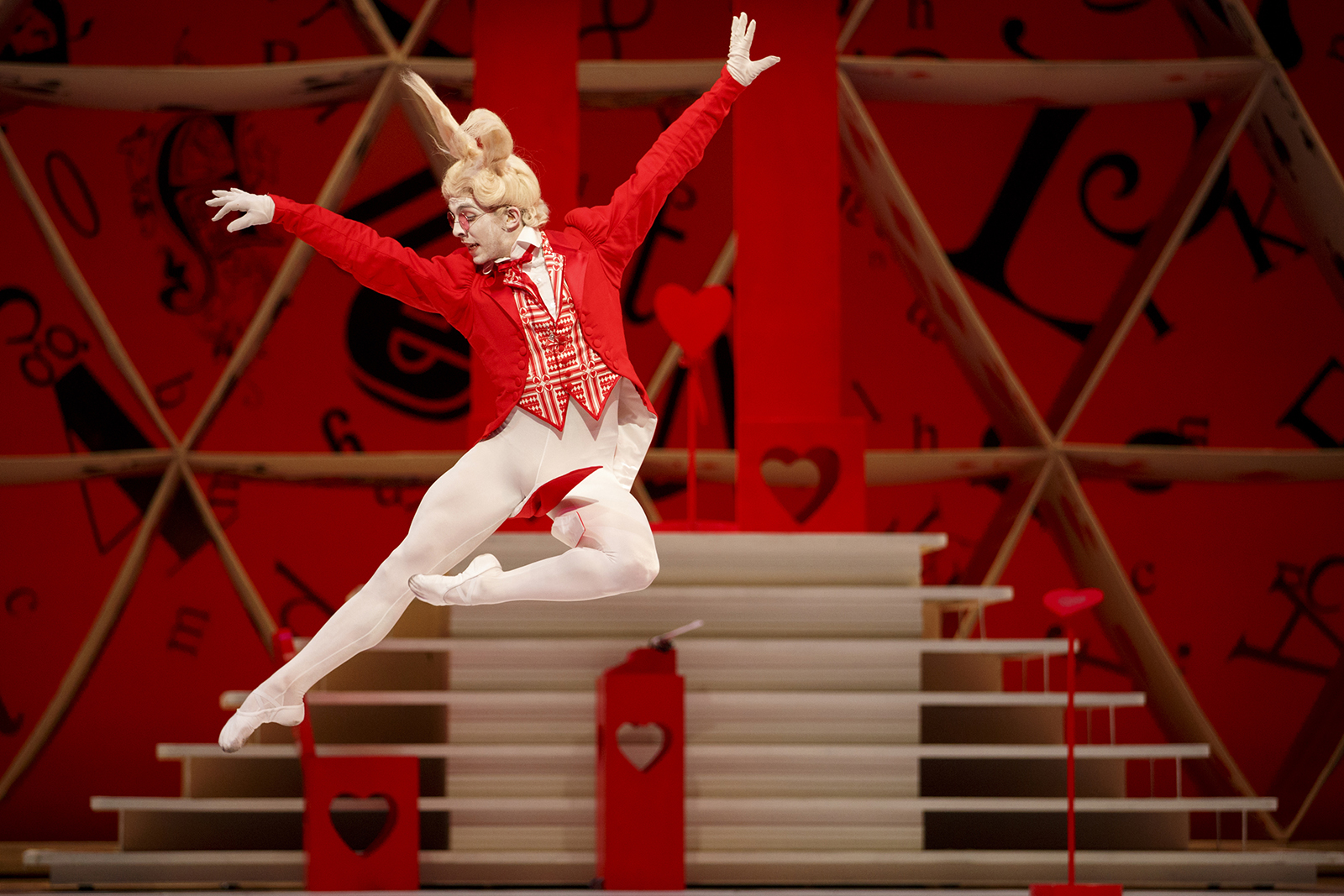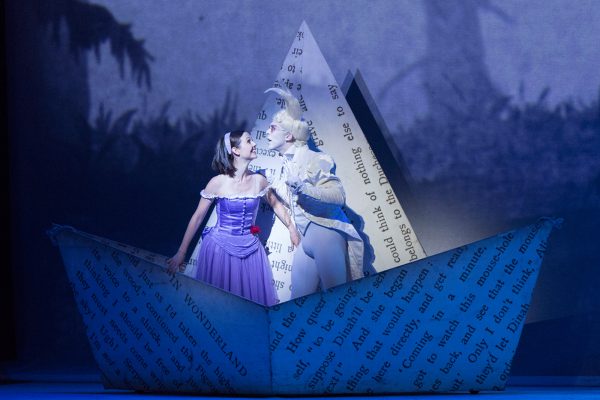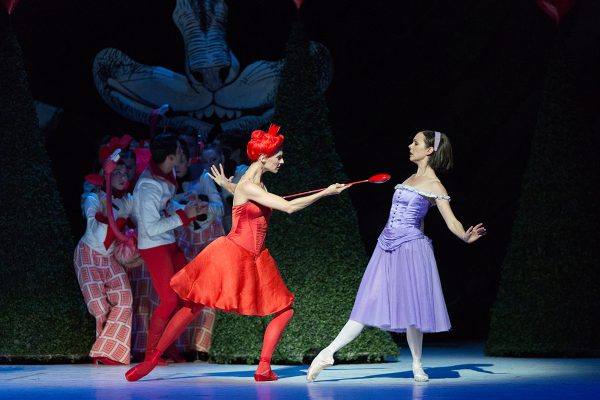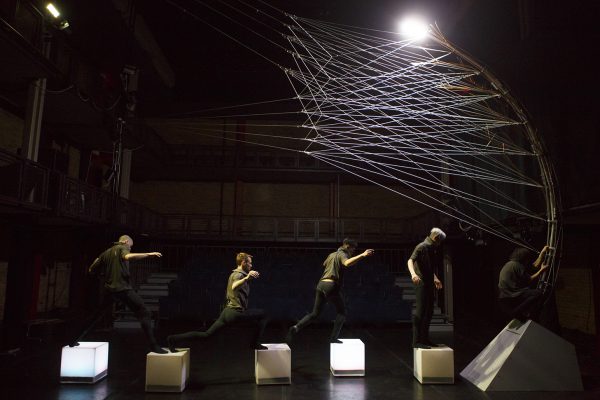The National Ballet of Canada’s (NBoC) Alice’s Adventures in Wonderland is a fantastical adventure that will draw you in and keep you captivated through every step and every note. Featuring choreography by internationally acclaimed Christopher Wheeldon and an original score by Joby Talbot, the work brings the beloved world of Lewis Carroll to the stage in a creative and technically excellent way.
While Alice’s story is a familiar one to audiences, the NBoC puts their own twist and spin on the story. Starring in the first Sunday matinee performance, Elena Lobsanova makes Alice her own. Not only does she shine in the bouncy, open, energetic choreography, but she brings a sense of youth and vitality to the role, imbuing her Alice with a stubbornness and curiosity that feels quintessential to the character. This Alice is older than the original book character, although she retains youthful and childlike qualities. Along with aging her, a love story for Alice is added with a character called Jack who becomes the Knave of Hearts when in Wonderland, played in this performance by McGee Maddox. While a love interest might detract from the story, here it adds purpose and structure to Alice’s adventures, allowing for an unconventional ending that ties things up in a sweet and satisfying way.
Arguably, this show most shines in the way it translates the surreal world of Wonderland to the dance stage. Every element of the ballet works together to immerse the audience in this world and story. The stage is constantly alive with action and detail. Talbot’s score isn’t just a backdrop for the dancing, but a living character in itself, falling and soaring and fluttering from start to finish. The music can shift the entire atmosphere of a scene, but always maintains some sort of magical quality that feels distinctly like the Wonderland we know and love. Along with the heavily detailed and interactive sets, Alice’s Adventures in Wonderland makes innovative use of projections, screens and technology. These are used to create effects for scenes that would otherwise be impossible to realize in live performance, such as when Alice falls down the rabbit hole, or when she shrinks and grows after drinking magic potions. The projections in the latter scene got audible reactions from the audience; recognition when the words “Eat Me” and “Drink Me” flashed across the screen, and awe and amusement when the shrinking and growing effects occurred. The Cheshire Cat represented another creative use of set and technology to create a desired effect, as black-clad performers carried giant cat costume pieces to form the illusion of the disappearing and disassembling Cheshire Cat.
Of course, the dancers and choreography play a substantial role in shaping the fabulously surreal and strange Wonderland. The performers were all fully committed to their roles, as each and every character has their own unique choreographic motifs and ways of dancing and moving. Even without the impressively colourful and detailed costumes from designer Bob Crowley, the characters would be recognizable for their movement and expressive qualities alone. From the smooth rolls of the Caterpillar to the strong but comedic sharpness of the Queen of Hearts to the flurry of the White Rabbit, everyone is distinctive and beautifully performed. A standout character in terms of unique movement quality is the iconic Mad Hatter, danced on March 15, 18, 21, 22, 25 and 28 by Robert Stephen. In a creative and charming choreographic decision, the Mad Hatter is the only character who taps instead of doing ballet. This is a welcome surprise that creatively represents his “madness” and sets him apart as a true other, even in Wonderland.
Alice’s Adventures in Wonderland is a true experience, melding an iconic story with classical ballet, surreal elements and true creativity. It is not to be missed.






